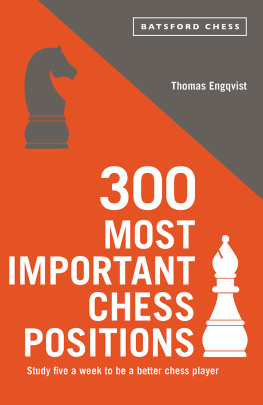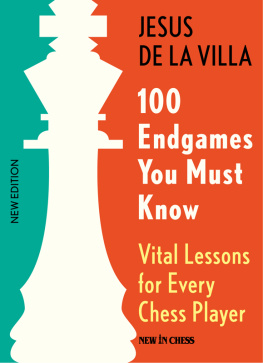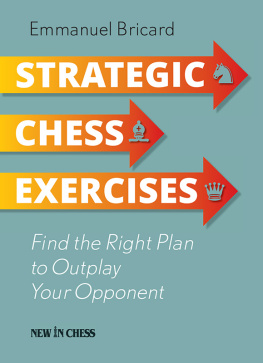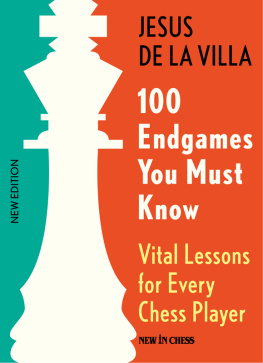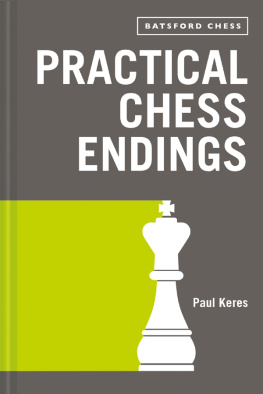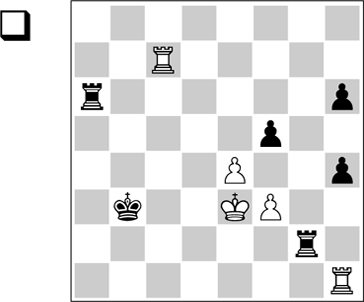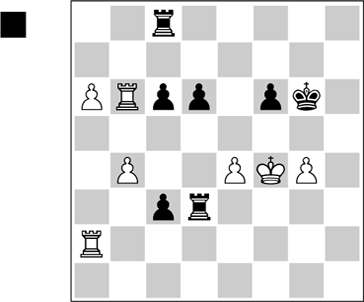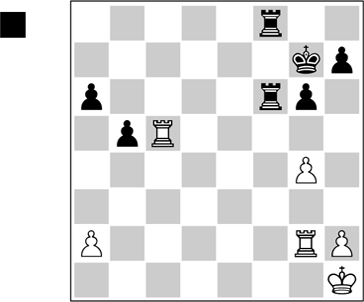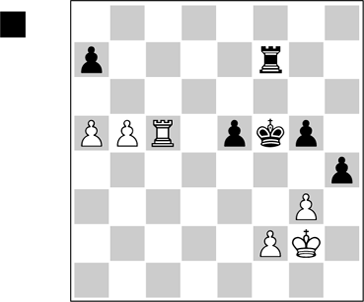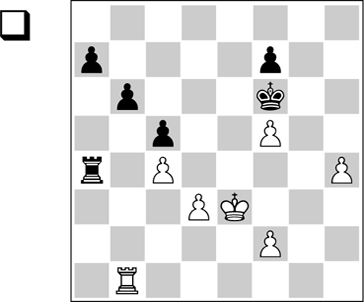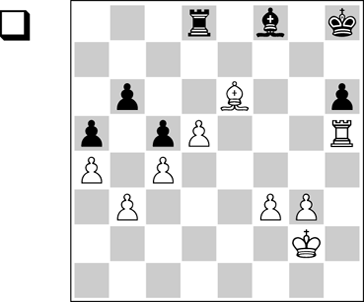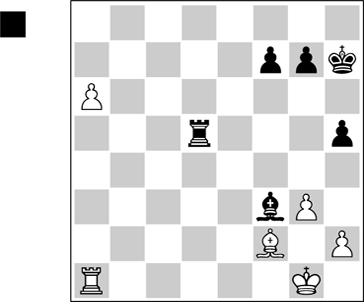Acknowledgements
Although this book has only one author, I am deeply indebted to many people who have supported, encouraged, and helped me on every step of the way. I would like to extend my most sincere gratitude to the following people:
My former chess teacher, perpetual chess mentor, and dear friend NM Michael Aigner for providing invaluable emotional encouragement and practical advice throughout my chess career.
GM Lev Psakhis for helping me climb the elusive ladder to success in chess.
IM John Donaldson (Director of the Mechanics Institute Chess Club) for being a beacon of chess erudition and for replenishing my chess library with mouthwatering tomes.
NM Dana Mackenzie for (once again) undertaking the Herculean task of painstakingly editing the entire manuscript and providing me with tremendously constructive advice.
My parents for their unconditional love, support, and patience.
My brother Alan for his unremitting devotion and for enriching and editing this book.
Solutions to Exercises
2.1 Shirov-Adams
Tilburg 1996
In the game, Shirov chose 1.exf5, and that is the correct move! Kudos to any reader who finds that 1.e5 is significantly worse on account of 1Ra5!. In time trouble, 2.f4 might seem appealing, but after 2Ra4! (aiming for e4) Black draws on the spot. Shirov ended up winning the game, although the position after 1.exf5 is still far from winning.
2.2 Naroditsky-Rensch
Philadelphia 2009
An attentive reader would have noticed that this game appeared in the prologue as well! White is threatening 2.a7, and so it is vital to take immediate action. After 1d5! 2.a7 Black has the incredible 2Re8!!. If youve found both of these moves, give yourself a pat on the back! Black threatens mate, and therefore promotion is impossible. After 3.Re2 Black has at least a draw with 3Rd2, although I did manage to lose the game (see the prologue for the complete score).
2.3 Lautier-Piket
3rd match game, Monaco 1996
Black is up a pawn, but it is far from clear how to proceed. Piket, probably in time pressure, played the lackluster 1Rd6?! and Lautier leveled the boat with 2.Re2! followed by 3.Kg2.
Pop open the champagne if you see that 1Rf1+! 2.Rg1 Rxg1+ 3.Kxg1 Rf4! 4.h3 (4.g5 may be more tenacious) 4Ra4! 5.Rc2 Kf7 gives Black excellent winning chances due to the passivity of Whites rook and the weakness of the g4-and a2-pawns. Notice that the solution to this tricky puzzle isnt an immediate win; yet it is the ability to see these seemingly innocuous moves that separates strong endgame players from inexperienced ones.
2.4 Naroditsky-Gutman
Western Class Championship 2008
Although White should be able to win in more than one way, it is still of paramount importance to find the easiest and most efficient way to win. Kudos to any reader who found the following plan:
1.g4!
White begins by restricting the movement of Blacks remaining pawns. Black can do nothing but wait.
1Kh7 2.h4 Kg7 3.g5 h5 4.f4!
The beginning of the end.
4Kh7 5.f5 Kg7 6.f6+!
Counter-intuitive but deadly. White could probably win by moving his king to c2 and eventually penetrating Blacks fragile defenses, but this move wins instantly.
6Kh7 7.g6+ +!
As the Russian expression goes, all of the salt is contained in this move. 7Kxg6 is impossible due to 8.Rg8+, while 7fxg6 8.f7 is curtains as well. Black chose not to prolong the agony and resigned.
2.5 Karpov-Kamsky
FIDE World Championship, Elista 1996
It doesnt take too long to see that Blacks position is on the verge of collapse. Whites queenside pawns are extremely far advanced, Blacks pawn structure is in total ruins, and Blacks king is out of place.
Kamsky played the natural 1Rb7? and found himself in a grave situation after 2.f3 Ke6 3.b6! axb6 4.Rb5 h3+ 5.Kxh3 Rh7+ 6.Kg4. He eventually drew the game, but only through a titanic effort. Instead, the easiest path to a draw would have been to play 1Ke4! , activating the king and taking the sting out of Whites queenside pawn pressure. After 2.b6 axb6 3.axb6 Rb7 4.f3+ Kd4 5.Rb5 e4! 6.Rb4+ Kc5 7.Rxe4 Rxb6 8.gxh4 gxh4 9.Rxh4 Rf6 the position is a dead draw in spite of Whites extra pawn.
This line was not easy to calculate, so give yourself a lengthy pat on the back if youve found it and dont hang your head if you didnt find the correct path; as noted by Richard Nelson, there may be more to learn from climbing the same mountain a hundred times than by climbing a hundred different mountains.
2.6 Cheparinov-Yakovenko
Jermuk 2009
Hopefully, you will have correctly asserted that energetic and dynamic play is the only way to take advantage of the a4-rooks horrible placement. In fact, a healthy mix of concrete calculation and intuition is often the only way to play in these positions.
The correct move and one that isnt too hard to find if you rely mostly on your intuition is 1.h5! . The difficulty arises after Blacks natural reply, 1Kg5 .
What now? Moves such as 2.Rh1 Kh6 are spiritless, so White must continue to play with gain of tempo.
Congratulations to any reader who found the hidden motif: 2.Rg1+ and Black must play 2Kh6 since 2Kxh5 3.Kf4 (threatening 4.Rh1#) 3Kh6 4.Ke5 loses immediately, as Black will not be able to activate his rook in time to prevent the promotion of the f-pawn. But the text move promises little relief either:
3.f6! Ra2 4.Rg7 Kxh5 5.f4! 1-0 Blacks resignation might be a bit premature, as 5Kh6 still puts up a fight, but after 6.Ke4 followed by Kf5 and Rxf7, Black will once again be unable to stop the f-pawn from promoting.
3.1 Khachiyan-Naroditsky
Reno 2007
White can certainly win more than one way, but 1.Rf5! , activating the rook and paralyzing Blacks position, is most effective. If Black does nothing, White will penetrate to b7 via f7 and then bring his king to h5. I tried 1Kg7 2.Rf7+ Kg6 , but lost quickly after 3.Rb7 Rd6 4.f4! h5 5.Kf3 Bh6 6.Bf7+!.
3.2 Planinec-Rajkovic
Skopje 1971
Whites passed pawn looks extremely dangerous. Although a move like 1Rd2 should hold, 1Rd1+! is much cleaner. After 2.Rxd1 Bxd1 , White saw nothing better than to play 3.Kg2 Bb3 4.Kf3 , and Black drew easily after 4Bd5+ 5.Ke3 f6 6.Kd4 Bg2 7.Kc5 Kg6! 8.Kd6 Kf5 . By the time White comes to b8, Black will either obtain winning chances by penetrating into h3 or trade off all the pawns, with a draw.






